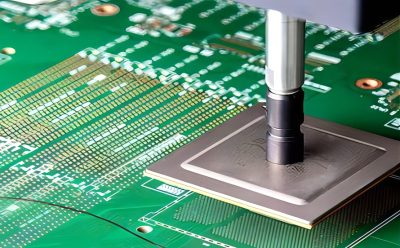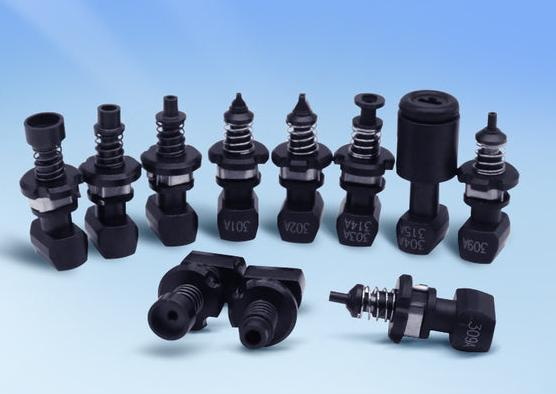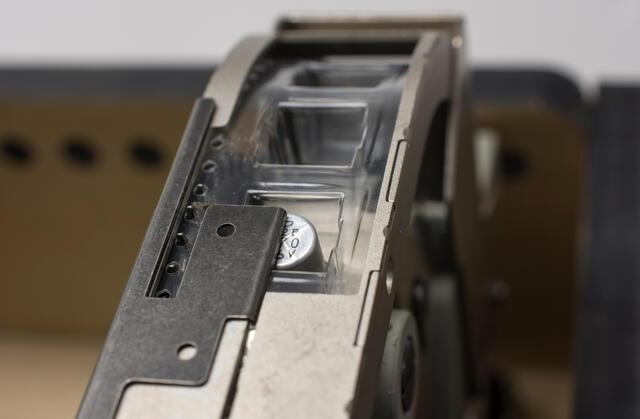Content Menu
● Understanding Pick and Place Machines
>> Key Components of Pick and Place Machines
● Advantages of Desktop Pick and Place Machines
>> Cost-Effectiveness
>> Ease of Use
>> Increased Efficiency
>> Compact Size
● Challenges for Beginners
>> Learning Curve
>> Initial Setup Complexity
● Choosing the Right Desktop Pick and Place Machine
>> Component Compatibility
>> Software Features
>> Support and Community
● Popular Models for Beginners
>> 1. Boarditto
>> 2. Liteplacer
>> 3. NeoDen 4
● How Pick and Place Machines Work
>> Automated Component Placement
>> High Precision and Speed
>> Increased Production Throughput
>> Component Variety and Complexity
>> Reduced Human Error
>> Improved Quality Consistency
>> Advanced Vision Systems
● Maintenance Considerations
>> Regular Calibration
>> Feeder Maintenance
>> Software Updates
● Conclusion
● FAQ
>> 1. What is a pick-and-place machine?
>> 2. Are desktop pick-and-place machines suitable for small-scale production?
>> 3. How do I choose the right pick-and-place machine?
>> 4. What are common challenges faced by beginners using pick-and-place machines?
>> 5. Can I use a pick-and-place machine without prior experience?
● Citations:
In the world of electronics, the assembly of printed circuit boards (PCBs) is a critical step in the manufacturing process. As technology advances, more hobbyists and small businesses are venturing into PCB assembly, often seeking efficient methods to streamline production. One such method is the use of desktop pick and place machines. This article explores whether these machines are suitable for beginners in PCB assembly, examining their functionality, ease of use, and overall benefits.

Understanding Pick and Place Machines
A pick and place machine is an automated device used in surface mount technology (SMT) to place electronic components onto PCBs with high precision. These machines utilize a robotic arm equipped with a suction mechanism to pick components from a feeder and place them onto designated spots on the PCB. The process is typically controlled by software that ensures accurate placement, making it essential for high-volume production environments.
Key Components of Pick and Place Machines
1. Placement Head: The robotic arm that picks up components.
2. Feeder System: Holds and supplies components to the placement head.
3. Vision System: Ensures accurate alignment of components before placement.
4. Control Software: Manages the operation of the machine, including programming and monitoring.
Advantages of Desktop Pick and Place Machines
Desktop pick and place machines offer several advantages that make them appealing to beginners:
Cost-Effectiveness
- Affordable Options: Many desktop models are priced below a few thousand dollars, making them accessible for hobbyists and small businesses.
- Reduced Labor Costs: Automating component placement can significantly decrease the need for manual labor, leading to cost savings over time.
Ease of Use
- User-Friendly Interfaces: Most desktop pick and place machines come with intuitive software that simplifies programming and operation. This is particularly beneficial for beginners who may not have extensive technical knowledge.
- Quick Setup: Many models are designed for easy setup, allowing users to start assembling PCBs shortly after unboxing.
Increased Efficiency
- Speed: Desktop machines can place components much faster than manual methods. For instance, some models can achieve speeds of over 20 components per minute.
- Consistency: Automated placement reduces human error, ensuring each component is placed accurately every time.
Compact Size
- Space-Saving Design: Desktop machines are typically smaller than industrial models, making them suitable for home workshops or small production areas.
Challenges for Beginners
While desktop pick and place machines present numerous benefits, there are also challenges that beginners may face:
Learning Curve
- Software Familiarity: Although many machines feature user-friendly interfaces, beginners may still need time to learn how to effectively use the software for programming placements.
- Component Handling Knowledge: Understanding different component types, sizes, and packaging can be overwhelming for newcomers.
Initial Setup Complexity
- Calibration Needs: Proper calibration is crucial for accuracy; beginners may find this process daunting without prior experience.
- Feeder Configuration: Setting up feeders correctly can be tricky; incorrect configurations can lead to misplacements or jams during operation.
Choosing the Right Desktop Pick and Place Machine
When selecting a desktop pick and place machine as a beginner, consider the following factors:
Component Compatibility
Ensure that the machine can handle the types of components you plan to use. Some machines have limitations on component size or pitch that could affect your projects.
Software Features
Look for machines with robust software that allows easy importation of designs from CAD programs. Features like vision alignment systems can also enhance accuracy.
Support and Community
Opt for brands with strong customer support and active user communities. This can provide valuable resources for troubleshooting and learning best practices.
Popular Models for Beginners
Several desktop pick and place machines are well-suited for beginners:
1. Boarditto
- Compact design
- Dual camera system for alignment
- User-friendly software interface
2. Liteplacer
- Affordable
- Good balance between features and cost
- Suitable for small projects
3. NeoDen 4
- Built-in vision system
- Capable of handling various component types
- Supports multiple feeders
These models offer a range of features tailored to meet the needs of hobbyists and small-scale production users.

How Pick and Place Machines Work
Understanding how pick and place machines operate is crucial for beginners looking to maximize their efficiency in PCB assembly.
Automated Component Placement
Pick and place machines automate the process of picking up electronic components from their reels or trays and placing them onto designated locations on the PCB based on coordinates provided by the PCB design software. This automation significantly speeds up assembly times compared to manual methods.
High Precision and Speed
These machines offer high precision in component placement, ensuring each component is accurately positioned according to design specifications. Some advanced models can achieve speeds exceeding 20,000 components per hour (CPH), which dramatically enhances production throughput.
Increased Production Throughput
The automation provided by pick and place machines allows manufacturers to assemble PCBs in large quantities quickly. This increased throughput contributes to quicker turnaround times, reducing overall production time and costs while maintaining quality standards.
Component Variety and Complexity
Pick and place machines are versatile; they can handle various component sizes, shapes, and types. They accommodate complex designs involving a mix of small and large components, making them suitable for diverse PCB assembly requirements.
Reduced Human Error
By automating component placement, these machines minimize human error associated with manual assembly processes. The precision offered by automated systems leads to fewer misplacements or defects during production runs.
Improved Quality Consistency
Automated placement results in improved quality across production lines. Consistency is crucial in meeting performance standards in electronic devices, ensuring reliability in end-user applications.
Advanced Vision Systems
Many modern pick and place machines come equipped with advanced vision systems capable of identifying fiducial marks on PCBs. These systems ensure accurate alignment during component placement while also detecting potential errors before they occur.
Maintenance Considerations
For beginners using desktop pick and place machines, understanding maintenance requirements is essential to ensure long-term reliability:
Regular Calibration
Regular calibration helps maintain accuracy in component placement. Users should familiarize themselves with calibration procedures specific to their machine model.
Feeder Maintenance
Feeders are critical components of pick and place machines; thus, keeping them clean and properly adjusted is vital. Regularly check feeder tensions to avoid jams or misfeeds during operation.
Software Updates
Keeping the machine's software up-to-date ensures access to new features or bug fixes that improve performance or usability.
Conclusion
Desktop pick and place machines are indeed suitable for beginners in PCB assembly. They provide an efficient, cost-effective way to automate component placement while offering user-friendly interfaces that simplify operation. However, potential users should be prepared to invest time in learning how to operate these machines effectively. By choosing the right model and familiarizing themselves with its features, beginners can significantly enhance their PCB assembly processes while minimizing errors associated with manual methods.

FAQ
1. What is a pick-and-place machine?
A pick-and-place machine is an automated device used in PCB assembly to accurately position electronic components onto printed circuit boards using robotic arms equipped with suction mechanisms.
2. Are desktop pick-and-place machines suitable for small-scale production?
Yes, desktop pick-and-place machines are ideal for small-scale production as they offer affordable pricing, compact size, and efficient operation tailored to low-volume needs.
3. How do I choose the right pick-and-place machine?
Consider factors such as component compatibility, software features, ease of use, support availability, and your specific production requirements when selecting a machine.
4. What are common challenges faced by beginners using pick-and-place machines?
Beginners may encounter challenges such as understanding software interfaces, calibrating the machine correctly, configuring feeders properly, and gaining familiarity with different component types.
5. Can I use a pick-and-place machine without prior experience?
While prior experience can be helpful, many desktop models are designed with user-friendliness in mind. With some initial learning time, beginners can effectively operate these machines.
Citations:
[1] https://www.microtype.io/should-you-buy-a-pick-and-place-machine/
[2] https://www.rocketscream.com/blog/2020/07/04/picking-the-right-or-wrong-pick-and-place-machine/
[3] https://www.neodensmt.com/news/how-pick-and-place-machine-works-26269798.html
[4] https://resources.pcb.cadence.com/blog/2024-pick-and-place-machine
[5] https://www.tronstol.com/how-to-deal-with-the-alarm-of-smt-pick-and-place-machine.html
[6] https://www.machinedesign.com/markets/robotics/article/21122266/10-benefits-of-using-a-pick-and-place-machine
[7] https://www.sparkfun.com/news/2586
[8] https://www.instructables.com/Pick-and-Place-Machine/
[9] https://circuithub.com/post/pcb-design-tips-to-improve-yield-during-the-pick-and-place-process-2
[10] https://openthings.io/review-of-neoden-4-pick-and-place-machine-with-vision-system/




















